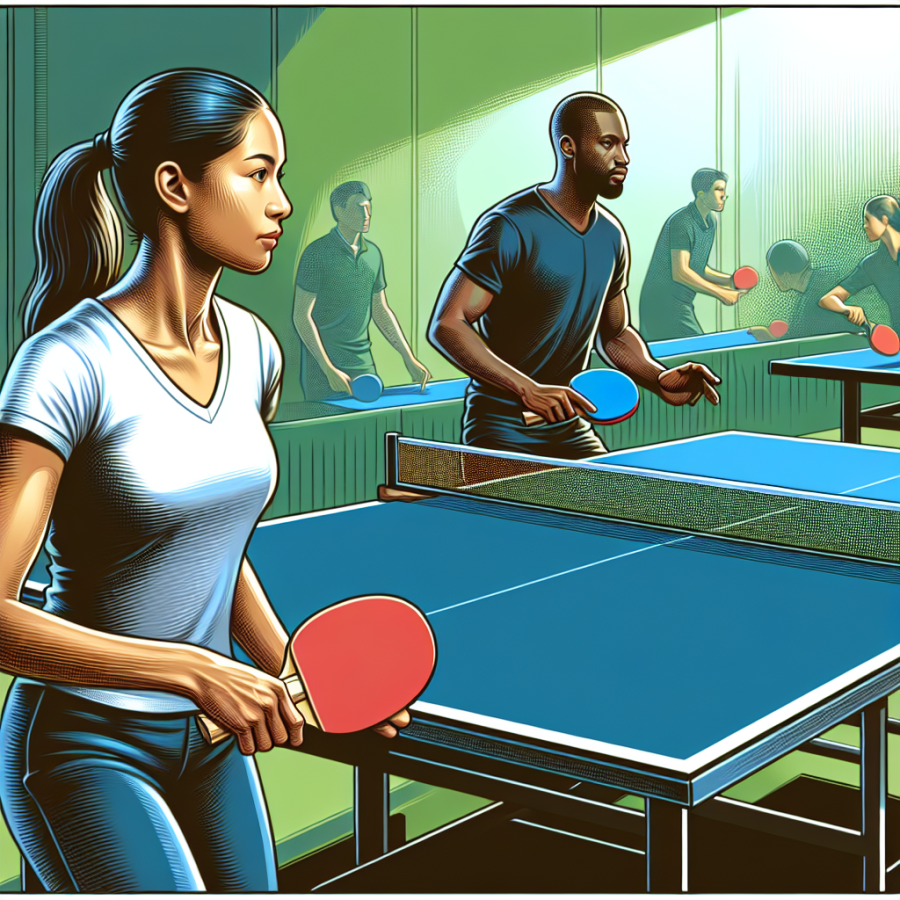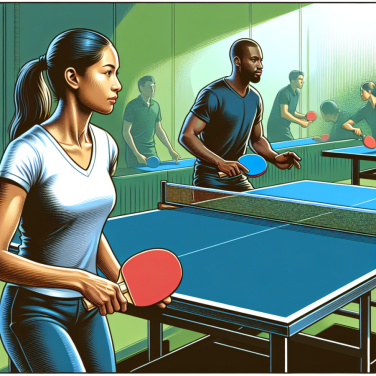Essential Techniques for Advancing Your Table Tennis Skills
To advance your table tennis skills and move towards mastery, continuous improvement and adopting crucial techniques is vital. One of the foundational aspects is perfecting your grip. A proper grip lays the groundwork for effective strokes and serves. Experiment with both shakehand and penhold grips to determine which offers you better control and flexibility.
Footwork in table tennis cannot be overstated. Agile and quick movement across the table allows you to position yourself optimally for returns, ensuring you can execute forehand and backhand strokes with power and precision. Drills that focus on lateral and forward movements will enhance your ability to reach the ball more effectively.
Stroke mastery is another core area to develop. Both forehand and backhand strokes need to be refined for consistency and accuracy. Pay attention to your technique, focusing on aspects like bat angle and point of contact with the ball. Regular practice with multiball training or a training robot can help solidify these strokes.
Spinning the ball is a strategic skill that can add complexity to your shots and confuse your opponent. Mastering various spins – topspin, backspin, and sidespin – will give you an arsenal of options during play. Understand how spin affects the trajectory and bounce of the ball, and learn how to read and react to your opponent's spin as well.
Serving is an area where a player can truly dominate. Develop a range of serves to keep your opponent guessing – short, long, spin-heavy, or fast-flat serves can all be effective when used strategically. Having a few deceptive serves can give you an edge during crucial points in a match.
Mental toughness is as critical as physical skill in table tennis. Mental training should involve focusing on your match strategy, managing nerves, and maintaining concentration throughout a point. Visualization techniques and goal setting can improve your mental agility and make your training more purposeful.
Advanced players often overlook the importance of recovery and physical conditioning. Implement a regimen that includes cardiovascular fitness, strength training, and stretching. A body that's fit and well-conditioned is less prone to injuries and can sustain longer periods of intense play.
Lastly, never underestimate the importance of regular competition. Competitive play allows you to apply your skills under pressure and pinpoint areas needing improvement. Participate in tournaments or league play to gain experience and elevate your game through diverse challenges.
Continuous learning from coaching, observing elite players, or video analysis, and adapting your training to address weaknesses will contribute significantly to your table tennis mastery.
Read also:
Mastering Kubb: The Ultimate Guide to Viking Chess
Strategies for Mental and Physical Preparation in Table Tennis
Table tennis, often referred to as ping pong, is a fast-paced sport that requires both mental and physical dexterity. Mastery of the game is not limited to just technical ability but also includes the readiness of mind and body. Here are some proven strategies used by top athletes to prepare mentally and physically for table tennis competition.
### Mental Preparation
**Visualization**: Before a match, it's crucial for players to visualize their techniques and the possible match scenarios. This preparation involves imagining themselves executing perfect strokes, winning points, and adapting to their opponent's style. This mental rehearsal boosts confidence and prepares the neural pathways for the actual movements during the game.
**Goal-Setting**: Clearly defined goals give players a road map to success. Setting both long-term goals, such as achieving a certain rank, and short-term goals, like improving a specific shot, can help players stay motivated and focused on what they need to do to improve.
**Focus Techniques**: Concentration in table tennis is paramount. Focus techniques such as mindfulness and breathing exercises can help players maintain their concentration throughout a match. These practices teach players to remain present in the moment and not get distracted by external pressures.
**Emotional Regulation**: Players need to manage their emotions to prevent frustration, anger, or anxiety from affecting their performance. Techniques such as positive self-talk and emotional conditioning can help players stay calm and composed under pressure.
**Routine Development**: Having a pre-match routine can help set a familiar structure that eases the mind into a state of readiness. Whether it's a specific warm-up or a particular order in which they prepare their gear, routines can bring a sense of control and normalcy prior to high-pressure matches.
### Physical Preparation
**Dynamic Warm-up**: A dynamic warm-up is essential to prepare the muscles for the quick, explosive movements required in table tennis. Incorporating stretching with movement not only increases the blood flow to the muscles but also reduces the risk of injury.
**Stamina Training**: Endurance can be a critical factor in long, intense matches. Cardiovascular exercises such as running, swimming, or cycling help to build stamina, ensuring that players can maintain their energy levels throughout the match.
**Strength and Agility Drills**: Table tennis calls for quick lateral movements and fast-twitch muscle reactions. Plyometrics and agility drills can enhance a player's reaction time and explosive power. Strength training for the core, legs, and playing arm also contribute to generating more power in shots.




